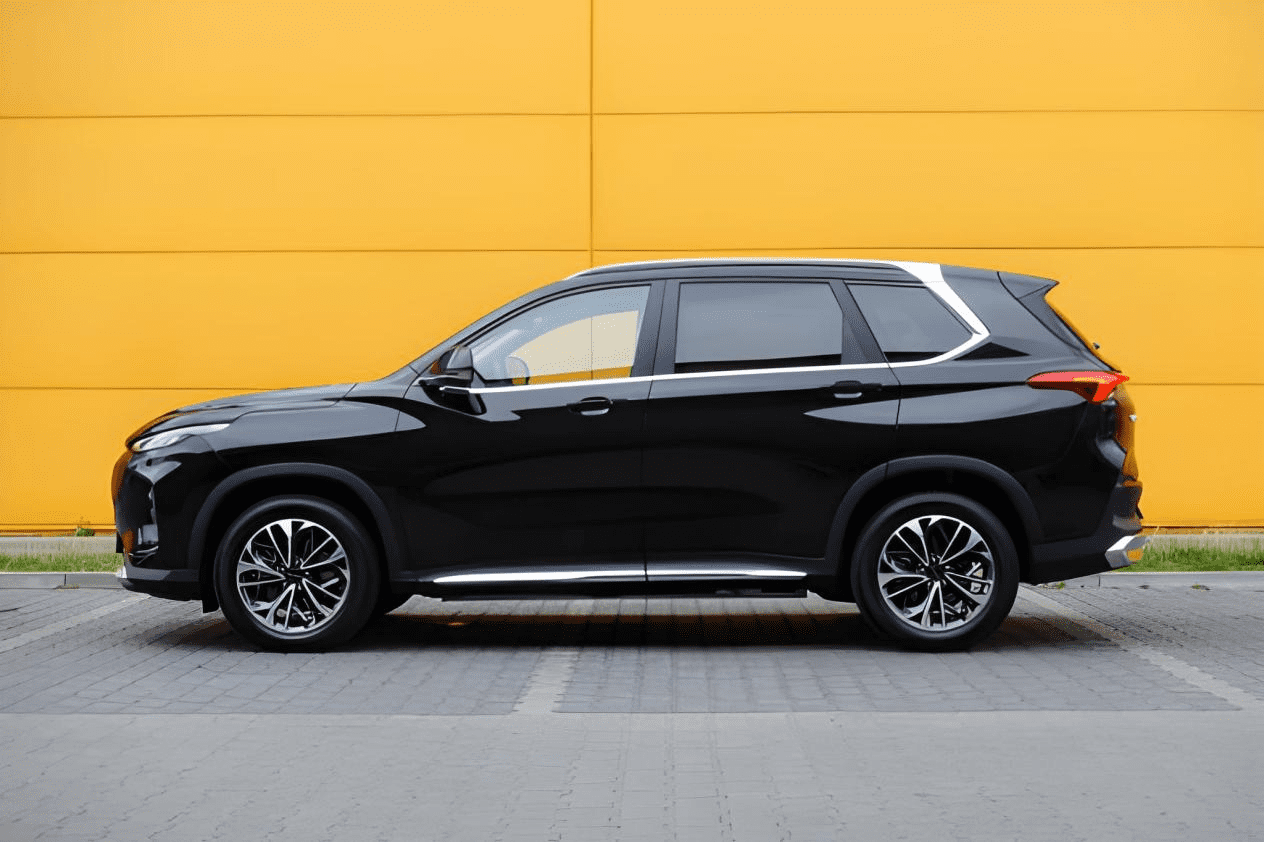When we talk about vehicles, one of the main things to consider is their size. The size of a vehicle plays a huge role in how it drives, parks, and even how much fuel it uses. It also affects how much space you need at home for parking. Understanding vehicle sizes is important because it helps you make better decisions when buying a car, especially if you are living in a city where parking can be tricky. For example, a smaller vehicle is easier to park in crowded areas, while larger vehicles might need more space. There are many tools online that allow you to compare vehicle sizes, and they can help you choose the best vehicle for your needs. In this article, we’ll look at why vehicle size is important and how you can compare different vehicles using a comparison tool. You’ll also find helpful tips on how to choose the right vehicle size based on your lifestyle. By the end of this article, you’ll have a better understanding of how vehicle size impacts your daily driving and parking experience.
Why Vehicle Size Matters
The size of a vehicle can affect many aspects of how you use it. For example, smaller cars are easier to park, especially in busy cities where parking spots are limited. They are also usually more fuel-efficient, meaning they use less gas and cost less to drive. On the other hand, larger vehicles, such as SUVs or trucks, offer more space inside and can be better for carrying heavy loads or driving off-road. These vehicles tend to use more fuel and may be harder to park in tight spaces. In addition, larger vehicles often require more maintenance, which can add to the overall cost of ownership. When deciding on the size of the vehicle that works best for you, it’s important to consider how often you’ll be driving in crowded areas and whether you need the extra space for passengers or cargo. For example, if you have a family and need to transport a lot of items, a larger vehicle may be a better choice. However, if you’re driving mostly in the city and need a car that’s easy to maneuver, a smaller vehicle might be a more practical option.
How to Compare Vehicle Sizes
Comparing vehicle sizes can be a bit tricky, especially if you don’t know what to look for. However, with the right tool, such as the comparison tool on the vehiclesizes website, it becomes a lot easier. Here’s how you can use it to compare vehicles:
- Select the vehicles to compare: Start by choosing the vehicles you want to compare. You can pick two or more vehicles from the list available.
- Check the dimensions: The tool will show you important details like length, width, height, and wheelbase for each vehicle. This will help you understand the size differences between them.
- Understand the differences: Once you have the vehicle measurements, you can compare them side by side. This helps you figure out which car will fit your parking space or be easier to drive on narrow roads.
- Consider your needs: After comparing, think about your personal needs. Do you need a compact car that’s easy to park, or do you prefer a bigger vehicle with more space for your family?
By using this tool, you can easily choose the vehicle that best fits your lifestyle and needs.
Different Types of Vehicles and Their Sizes
Vehicles come in many shapes and sizes. Knowing the difference between the types can help you make a better choice. For instance, a sedan is a popular type of car that is usually smaller and offers good fuel efficiency. It’s perfect for city driving because it’s easy to park and navigate through traffic. An SUV, on the other hand, is larger and offers more space for passengers and cargo. This makes it a good choice for families or people who need extra storage space. Pickup trucks are even bigger and are designed to carry heavy loads, which makes them ideal for work purposes or long trips. There are also smaller vehicles like coupes and convertibles that are typically sportier and more compact. These vehicles are great for people who want a fun driving experience but don’t need a lot of space. Each of these types has its advantages depending on your needs. If you need a car for quick trips in the city, a smaller vehicle might be best. But if you often go on family road trips, an SUV or pickup truck could be more suitable.
How Vehicle Size Affects Driving
The size of a vehicle greatly influences how it drives and handles on the road. Here are a few ways the size of a vehicle can affect your driving experience:
- Maneuverability: Smaller cars are easier to steer and maneuver, especially in busy city streets where space is limited.
- Fuel Efficiency: Generally, smaller cars use less fuel, making them cheaper to run. Larger vehicles tend to consume more fuel due to their weight and size.
- Comfort: Larger cars like SUVs and trucks provide more space inside, which can be more comfortable for long trips. They usually have higher seating, offering better views of the road.
- Driving Experience: Smaller cars feel lighter and quicker, while larger vehicles offer more stability and control, especially on highways or off-road terrains.
Choosing a vehicle size that fits your driving habits is crucial. If you drive a lot in busy city areas, a smaller car will make it easier to navigate tight spaces. However, if you travel long distances or need to carry more passengers and cargo, a larger vehicle may be the better option.
Vehicle Sizes and Their Impact on Parking
When it comes to parking, vehicle size is one of the most important factors to consider. Larger vehicles like SUVs or trucks require more space to park, and they may not fit into smaller parking spots. If you live in an area where parking spaces are limited, this could become a problem. On the other hand, smaller vehicles are easier to park because they fit into tighter spaces. Additionally, parking garages may have height restrictions that can make it difficult for taller vehicles like trucks or vans to enter. If you’re considering a vehicle, it’s a good idea to check the parking situation in your area. Using the comparison tool on websites like Vehicle Sizes can help you understand how well different vehicles fit into typical parking spaces. For example, you can compare the lengths and widths of vehicles to see which one will work best for your parking space. Here are some factors to keep in mind when considering parking:
- Length: A longer car will need more space to park.
- Width: Wider cars might be harder to park in narrow spaces.
- Height: Taller vehicles might not fit in garages with height limits.
Knowing these details in advance will save you from any parking challenges later.
The Future of Vehicle Sizes
As cities grow and new technologies are introduced, vehicle sizes may continue to evolve. For example, with the rise of electric vehicles (EVs), many car manufacturers are designing smaller, more efficient cars. These electric vehicles are often compact, with sleek designs that are perfect for city driving. Additionally, some companies are focusing on creating self-parking cars that make it easier to park large vehicles in tight spaces. These technological advancements will likely make it easier for people to own larger vehicles without worrying about parking. Moreover, new laws and regulations in many cities are pushing for more eco-friendly vehicles, which are often smaller and more fuel-efficient. This shift will help reduce traffic congestion and improve the environment. Over time, we may also see the introduction of even smaller, more efficient vehicles that can easily fit into the smallest of spaces. This would be especially beneficial in crowded urban areas where parking is a constant challenge. The future of vehicle sizes seems to be moving towards more compact, efficient, and environmentally-friendly options.
Final Words
In conclusion, understanding vehicle sizes is an essential part of choosing the right car. Whether you’re trying to find a vehicle that fits your parking space or one that offers the best fuel efficiency, knowing the size can help you make an informed decision. Using tools like the https://www.vehiclesizes.com/compare/ makes this process much easier. By comparing different vehicles, you can quickly see the size differences and find the one that best fits your needs. Whether you prefer a small car for easy city driving or a larger vehicle for family trips and off-roading, the right vehicle size can make a big difference in your driving experience. So next time you’re looking for a new car, make sure to consider its size and how it will impact your daily life.



































